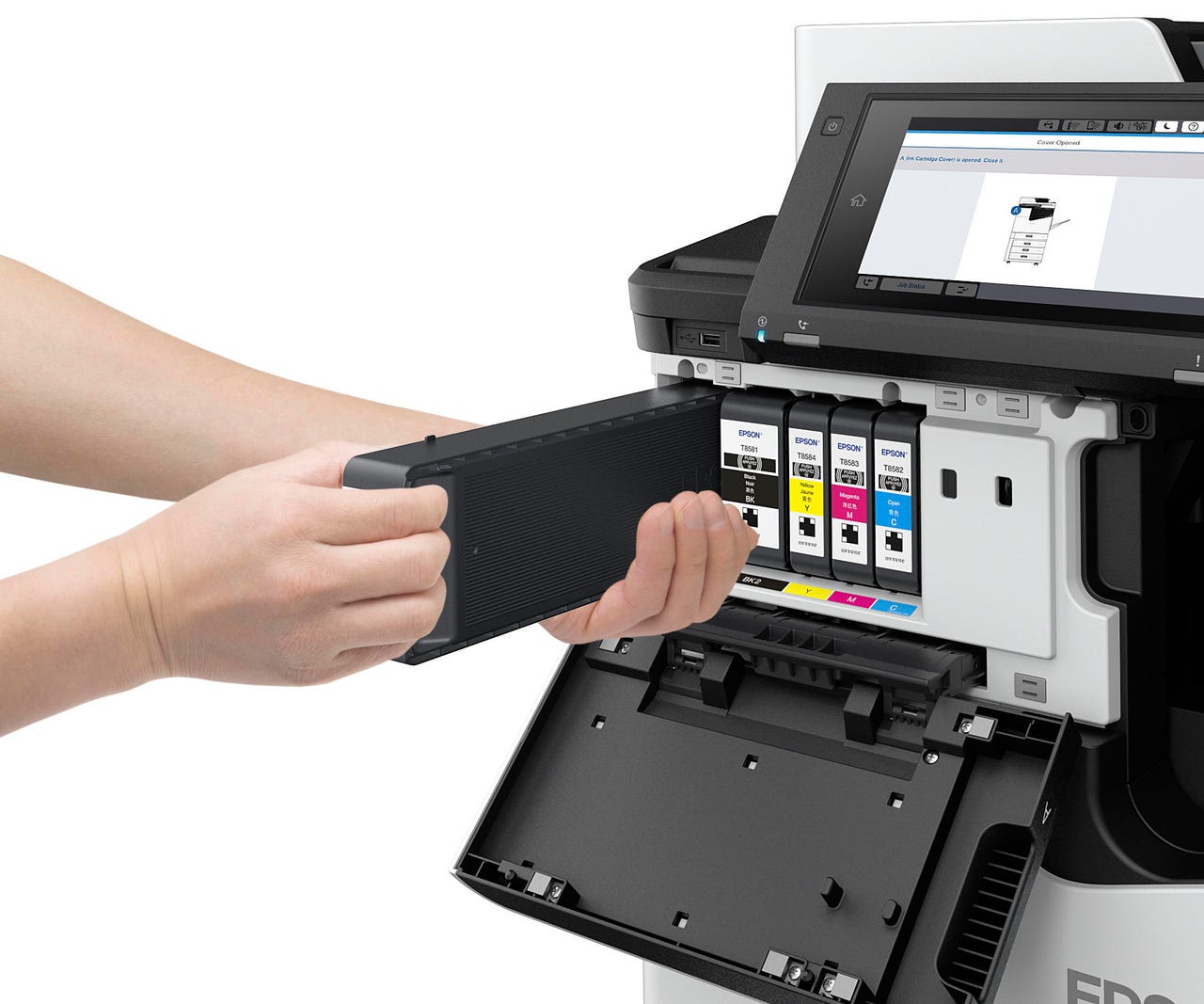Taking inkjet from the home to the office
Until recently, businesses and individuals have viewed inkjet printers as more suitable for home use. However, the emergence of more advanced technologies and a sharper focus on printing costs and environmental performance has provided a compelling case for businesses to invest in inkjet rather than laser printers. Business inkjet printers are now superior to laser printers on a range of fronts.
For example, laser printers require more interventions to replenish parts and consumables than inkjet printers typically do, which means the use of inkjet reduces the cost and resources required to keep the printer running. This also contributes to less landfill as inkjet printers also generate far fewer emissions -- helping businesses operate more sustainably.

In addition, inkjet printers do not generate heat during the printing process unlike laser printers. This contributes to lower power costs and reduces the printer's impact on the comfort of nearby workers. Epson's Workforce Enterprise inkjet printer range consumes 87 percent less energy than laser (The range's maximum power consumption of 320W is 87 percent less than the average of 22 laser counterpart 60 ppm+ models available in the Australian market as at 31 October 2018 -- based on the manufacturers' own specifications).
Inkjet printers now also meet business demands for simplicity, reliability, and high performance. Epson's WorkForce Enterprise inkjet range features a simple working mechanism and high page yield, reducing downtime and enabling businesses to reliably complete high-volume jobs during peak periods. These printers also deliver faster, more effective printing; depending on the model selected, businesses can achieve print speeds of up to 75 ppm or 100 ppm. They also deliver high print quality -- up from a default 600 x 1200 dpi to a maximum 600 x 2400 dpi.
Furthermore, the Epson Workforce Enterprise range features high capacity inks producing up to 100,000 pages in mono and 50,000 in colour; a 5,350-sheet paper input with maximum paper feed; and a 4,000-sheet finisher unit with stapling. No warm-up time means print jobs can be completed quickly and efficiently.
Innovations such as Epson's PrecisionCore inkjet technology are also key to elevating inkjet printing into the enterprise. PrecisionCore technology merges Epson's expertise in micro-electro mechanical systems (MEMS) fabrication with advances in materials science to deliver industry-leading output at high speed. The print chips produced are, inch for inch, one of the world's fastest inkjet printing technologies.
Epson's research and development activities also extend to the ink itself. The DURABrite Pro ink used in the Epson WorkForce Enterprise range provides laser-sharp print quality on a range of media types and grades. Nozzle Verification technology and dot adjustment enable businesses to eliminate misprints and dead pixels to ensure consistent print quality. Furthermore, an electrostatic transport belt within the printer keeps paper flat, enabling smooth gradients and consistently sharp images.
Advances in Epson inkjet printer solutions also encompass mobility and management. Epson Workforce Enterprise printers can be managed remotely and are compatible with a wide range of tools and software that can be integrated into existing systems to improve productivity and efficiency. Epson Print Admin enables businesses to monitor print usage and create a secure printing, scanning, and copying environment, while Epson Device Admin provides a single interface to control, analyse, and manage a printer fleet. In addition, Epson's mobile and cloud printing services allow workers to print and scan from smartphones and tablets.
Finally, Epson WorkForce Enterprise printers are compatible with Document Capture Pro Server, making it easy to manage documents, while Epson Open Platform gives businesses access to a range of partner solutions to build on printing functionality and applications.
These advances make inkjet a compelling alternative to laser printing and showcase the technology's application to the business market. For more information, contact us at http://www.epson.com.au/workforce or call 02 8899 3666.